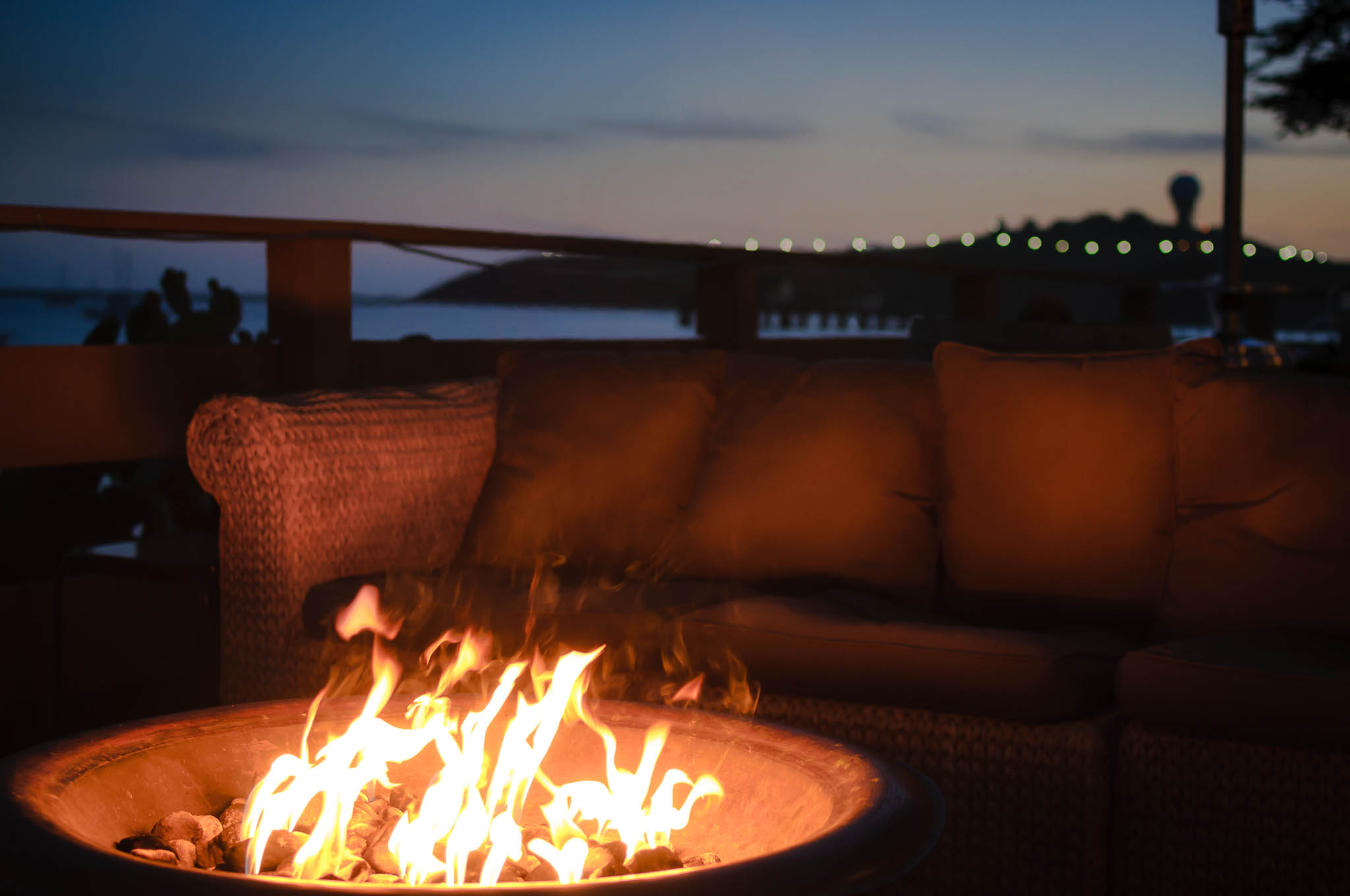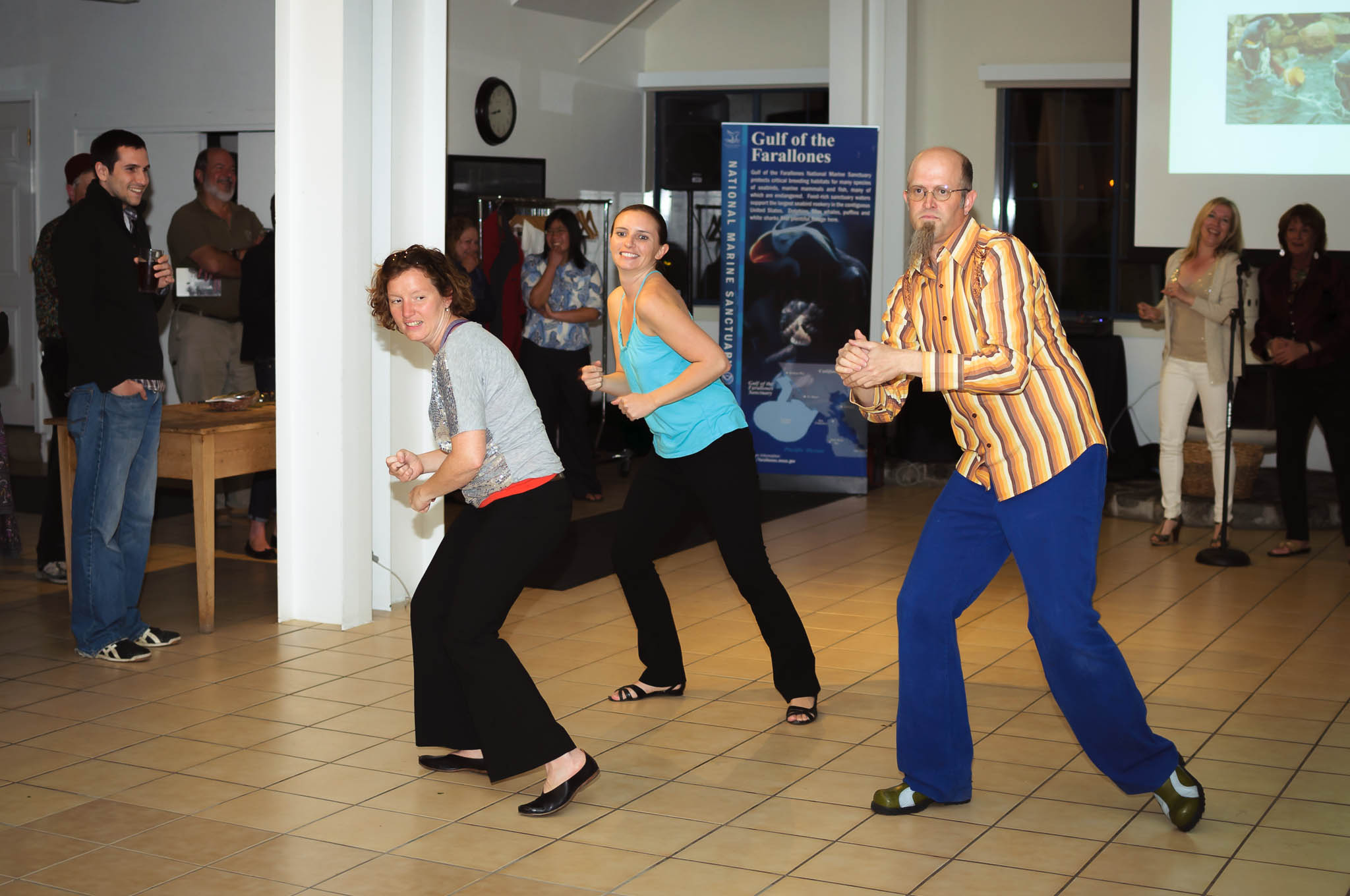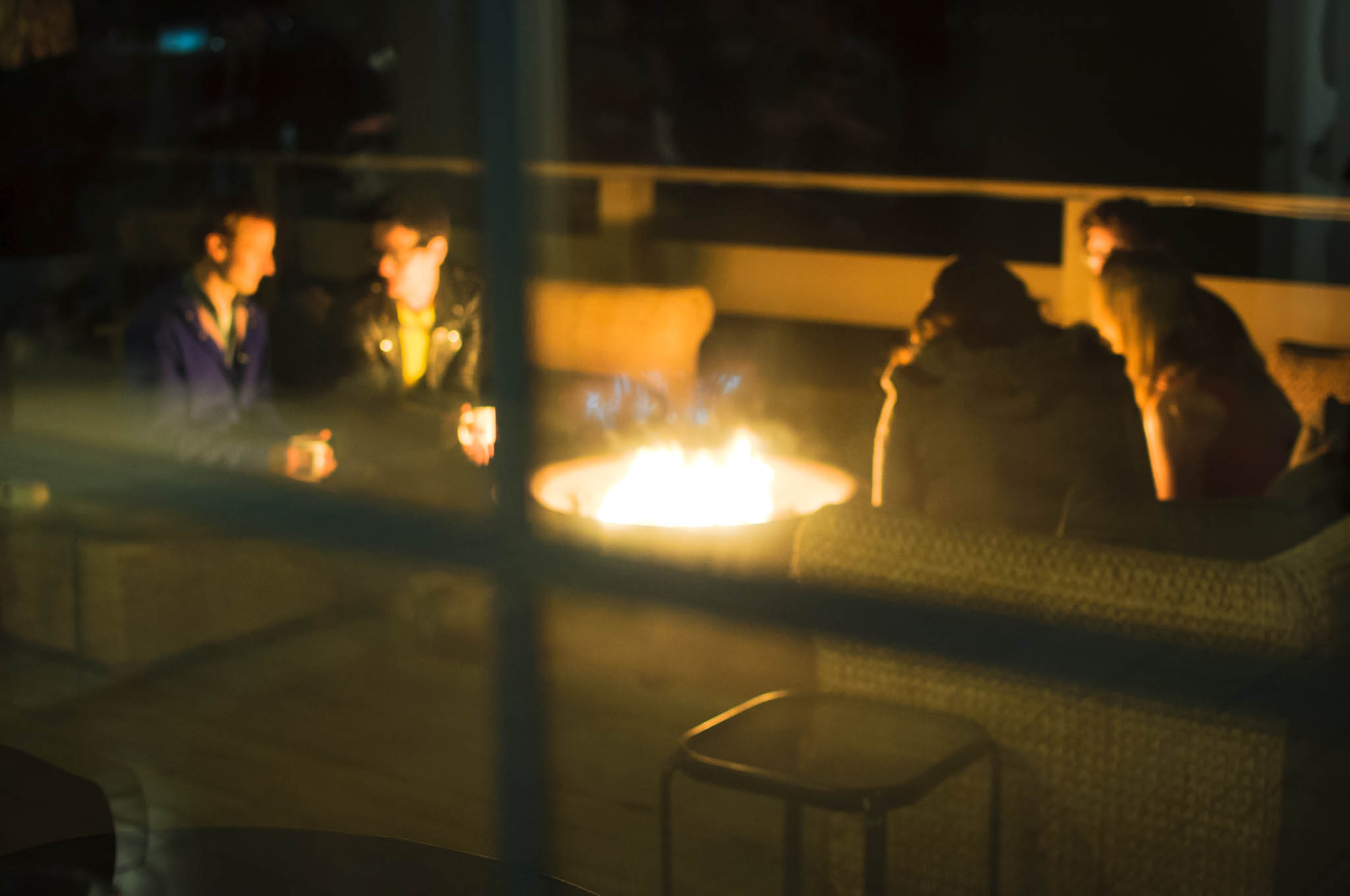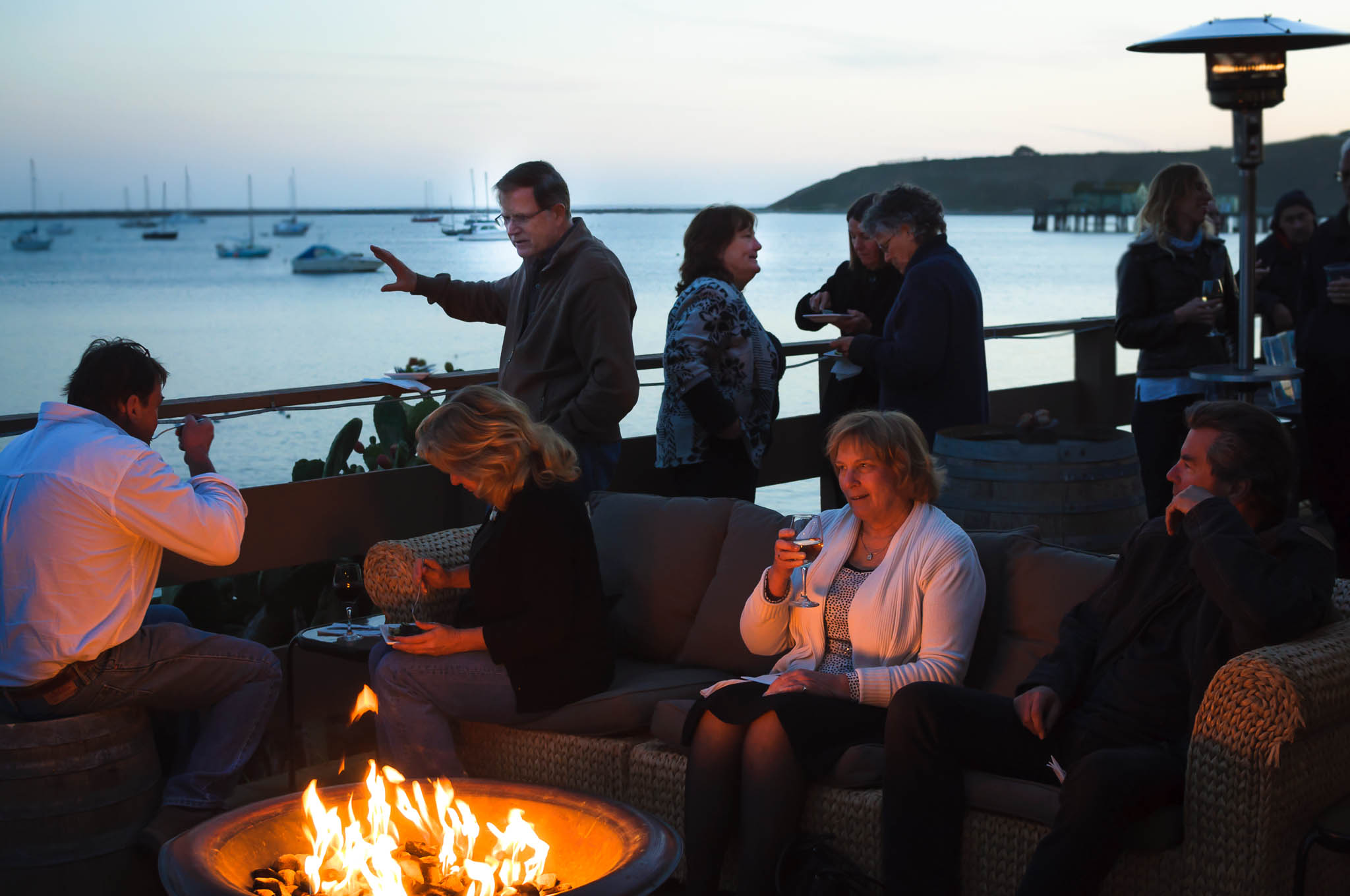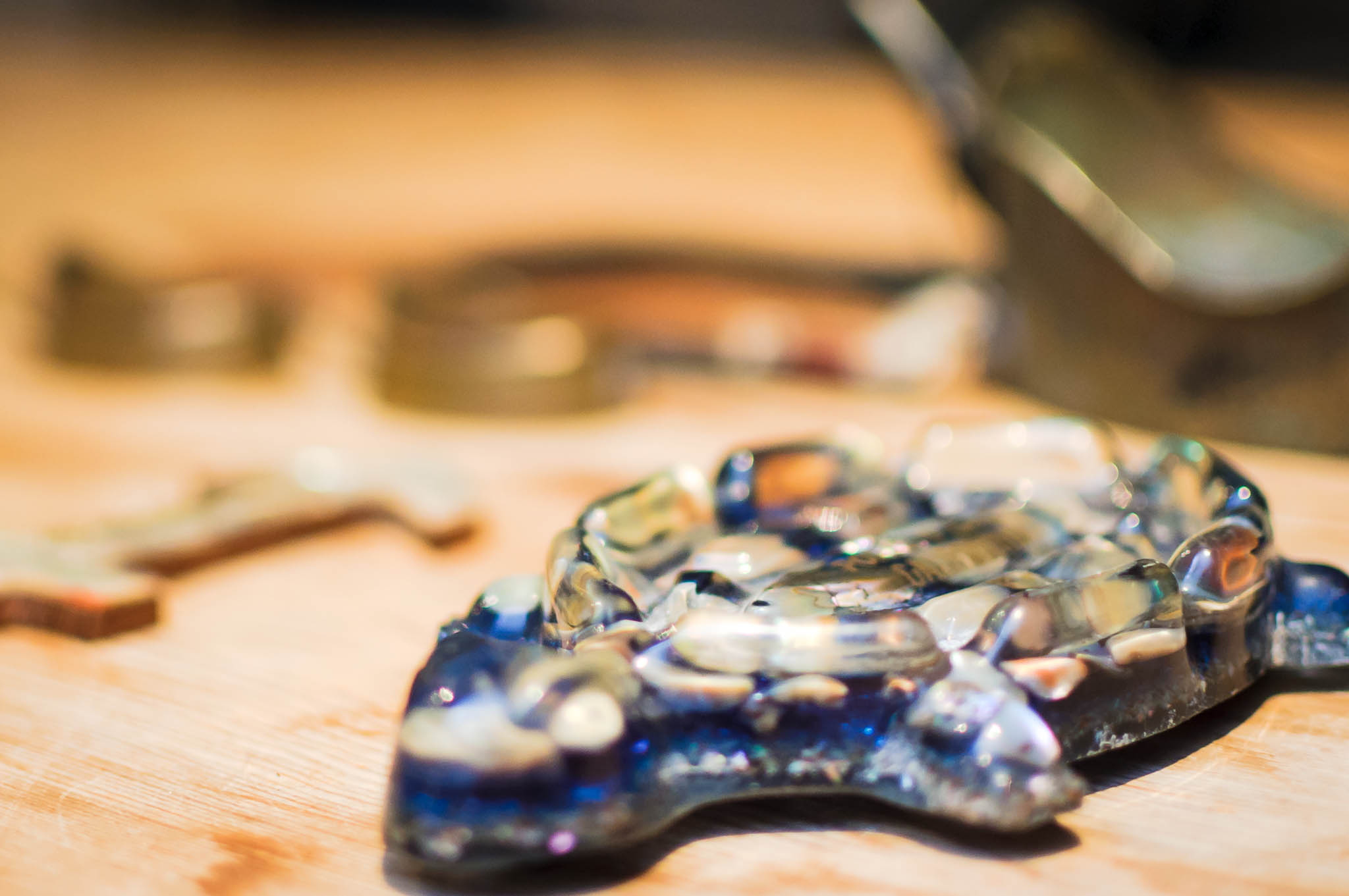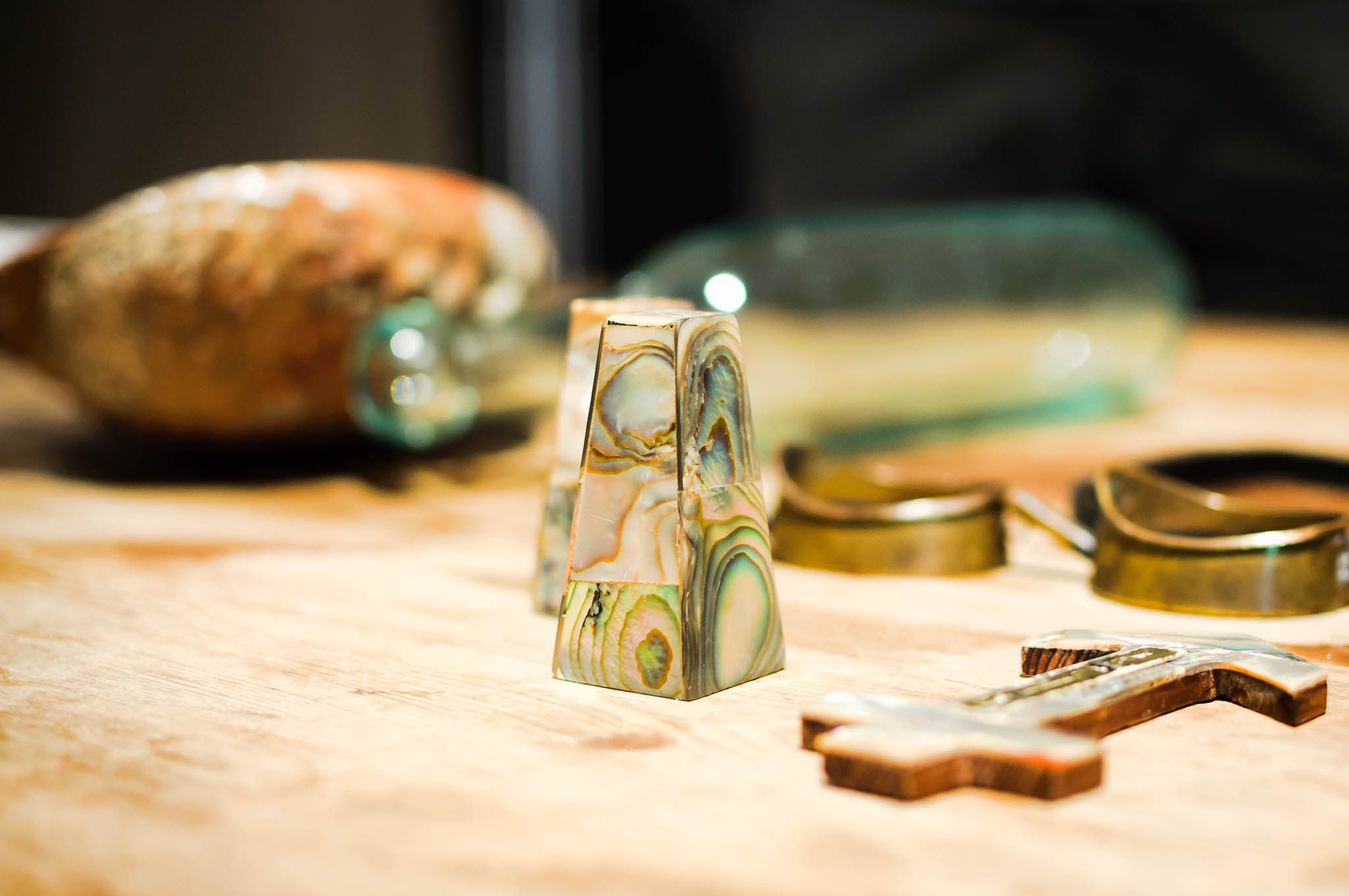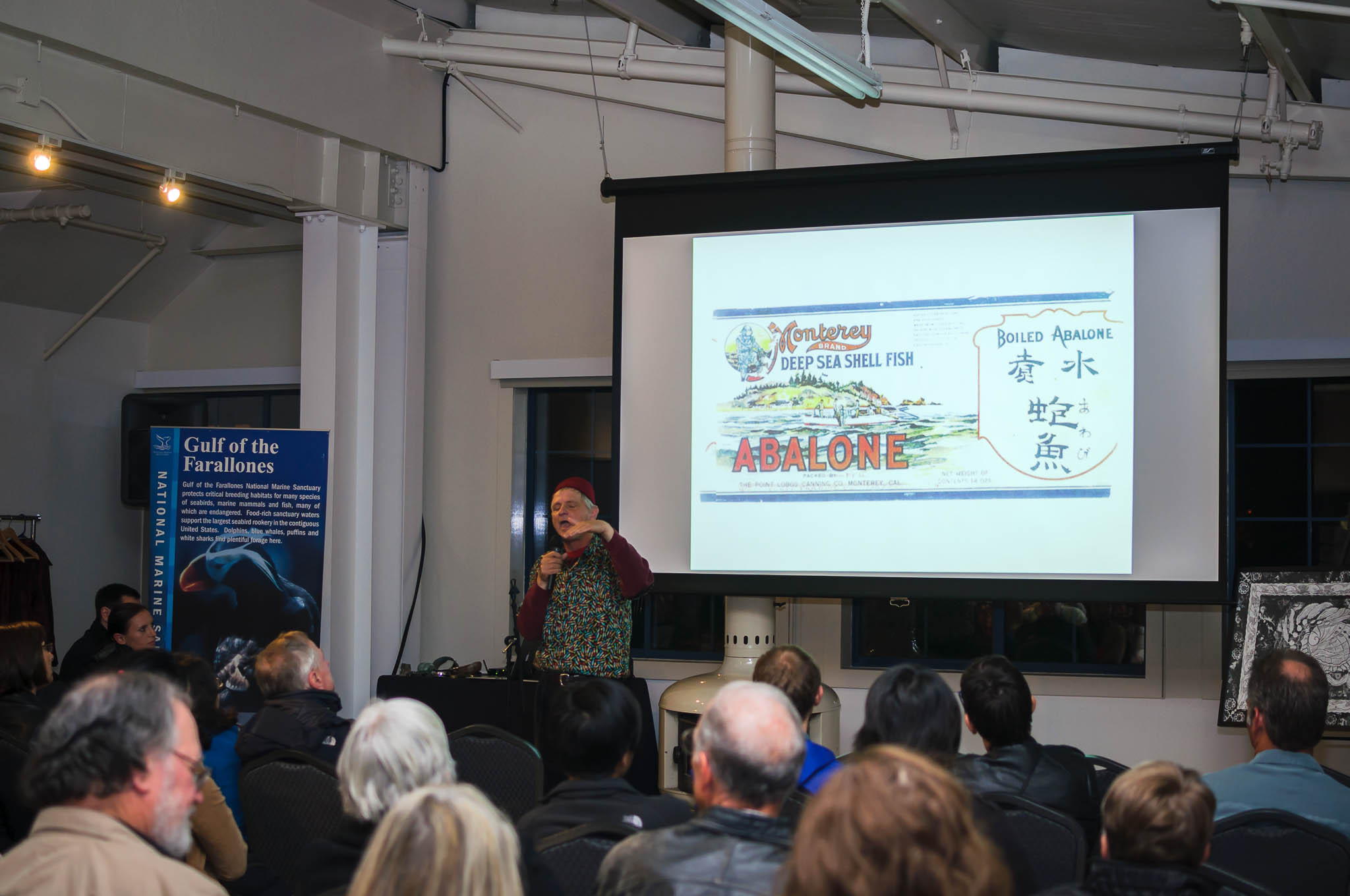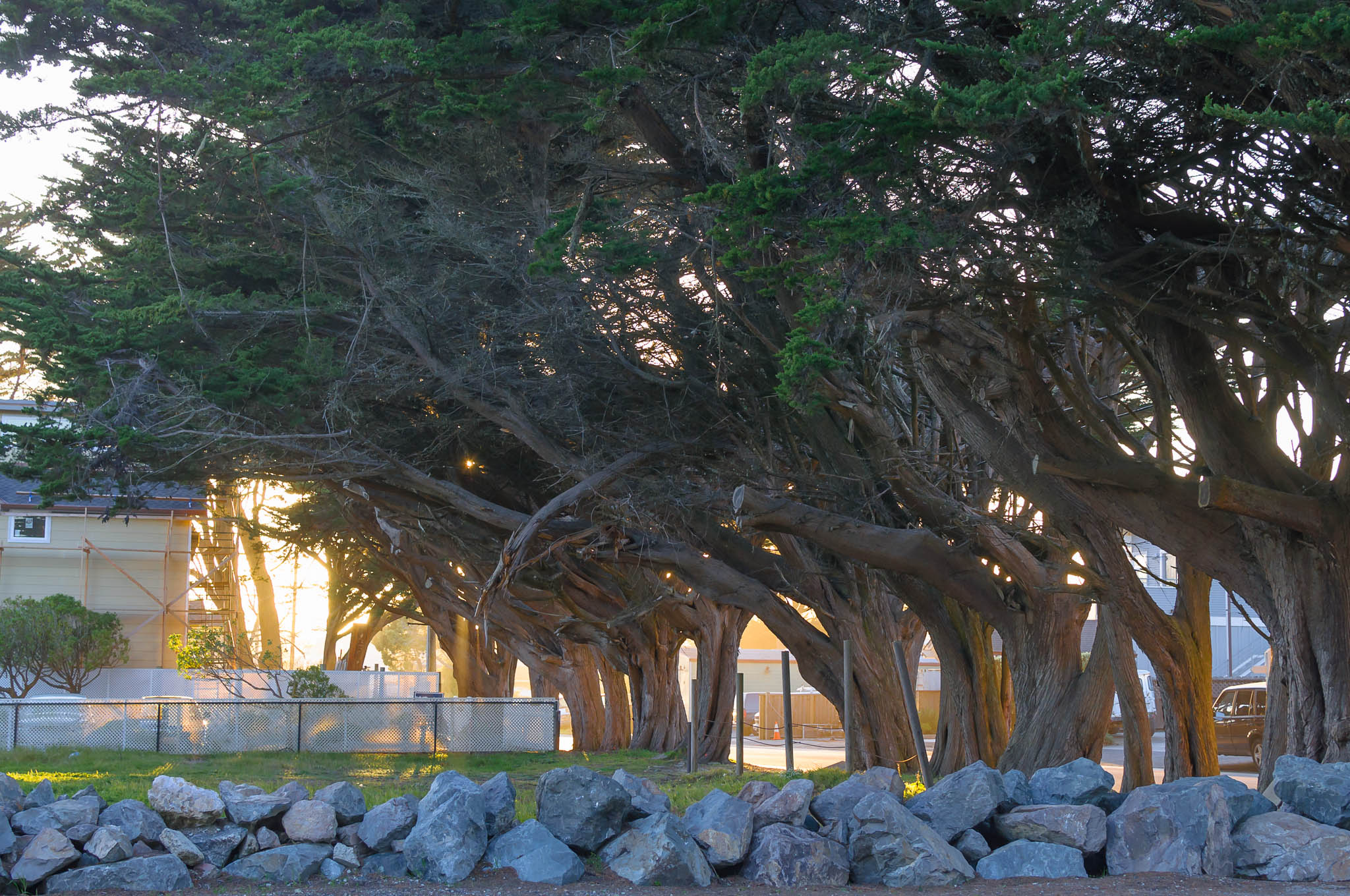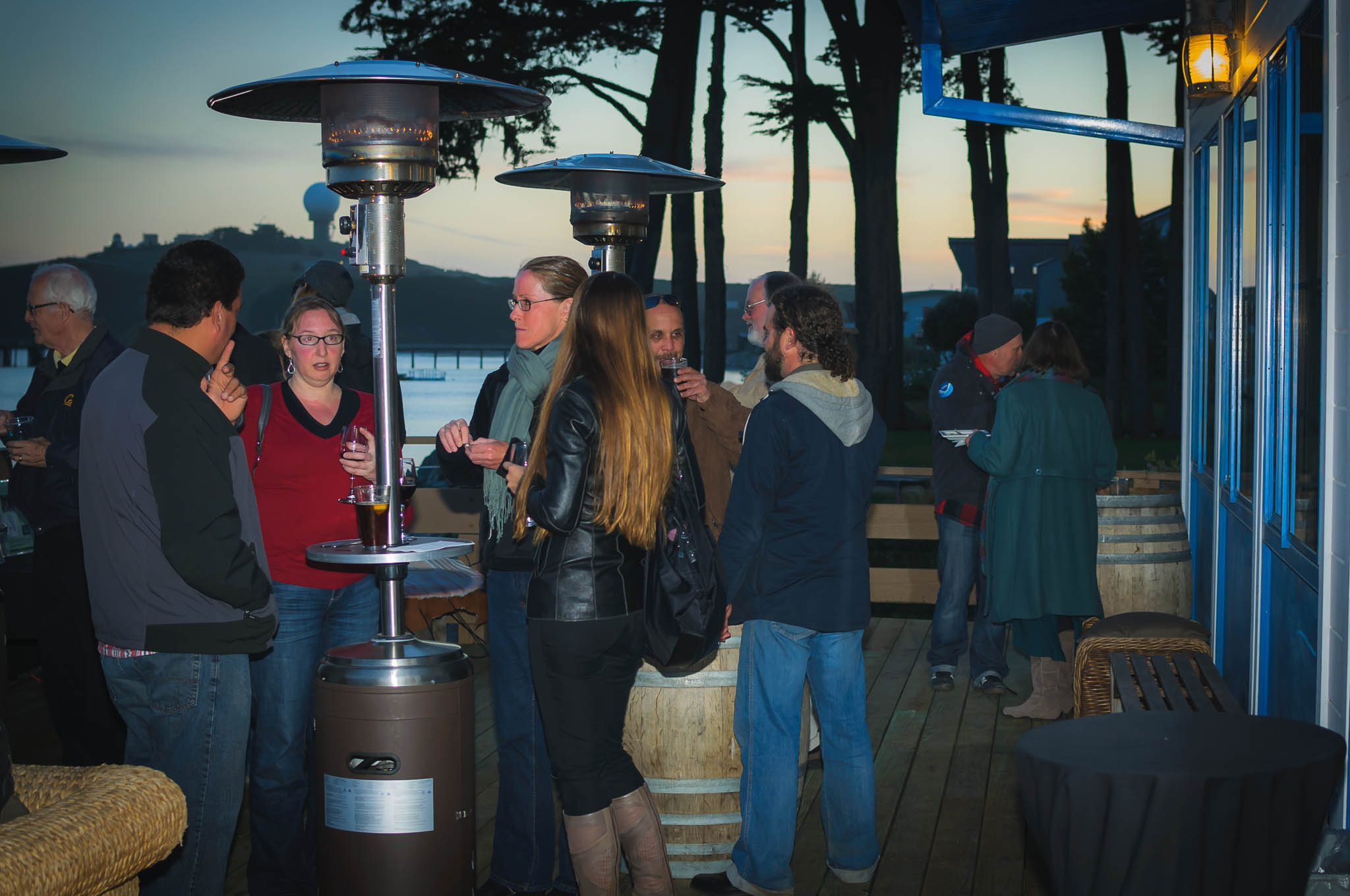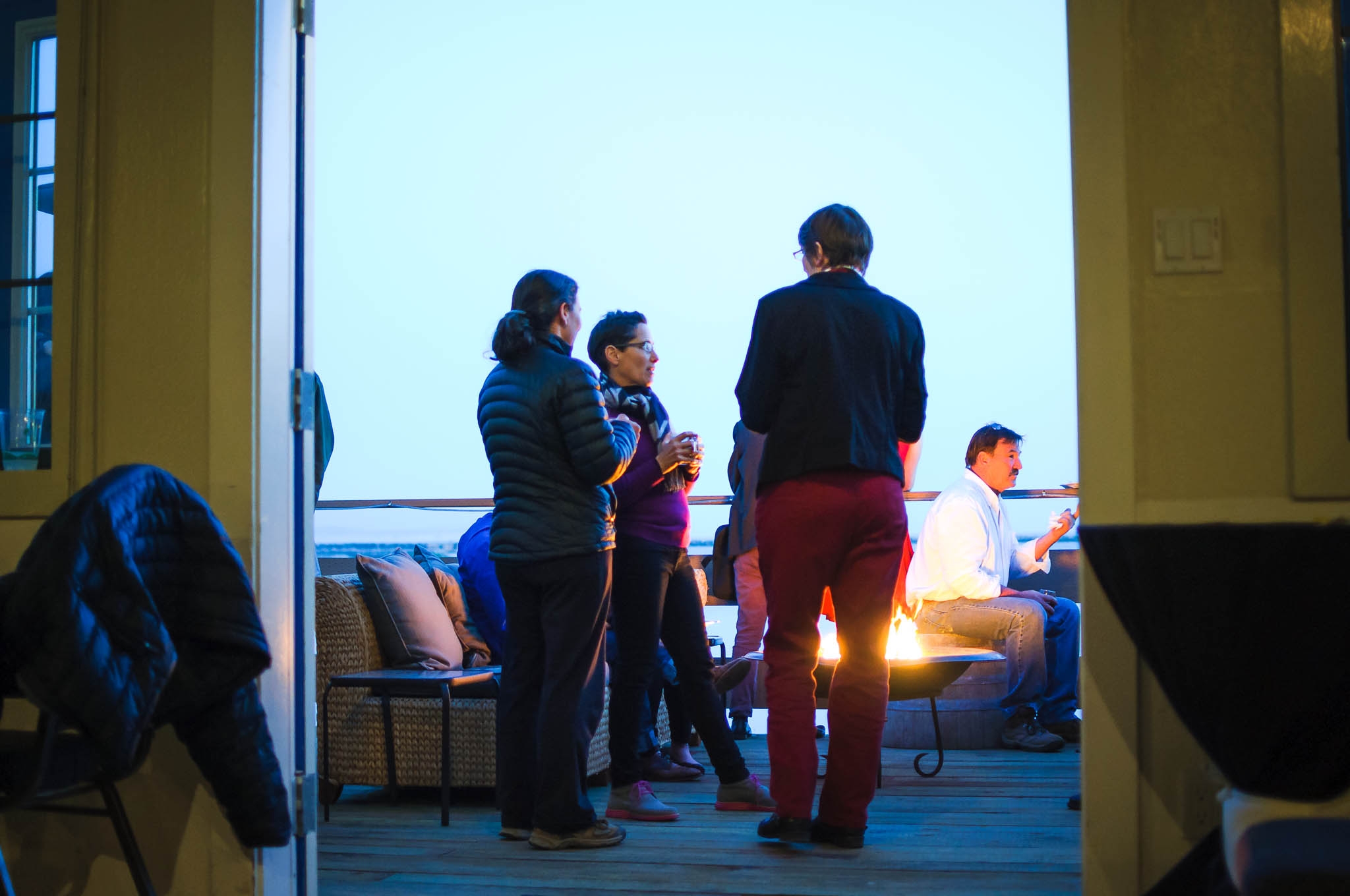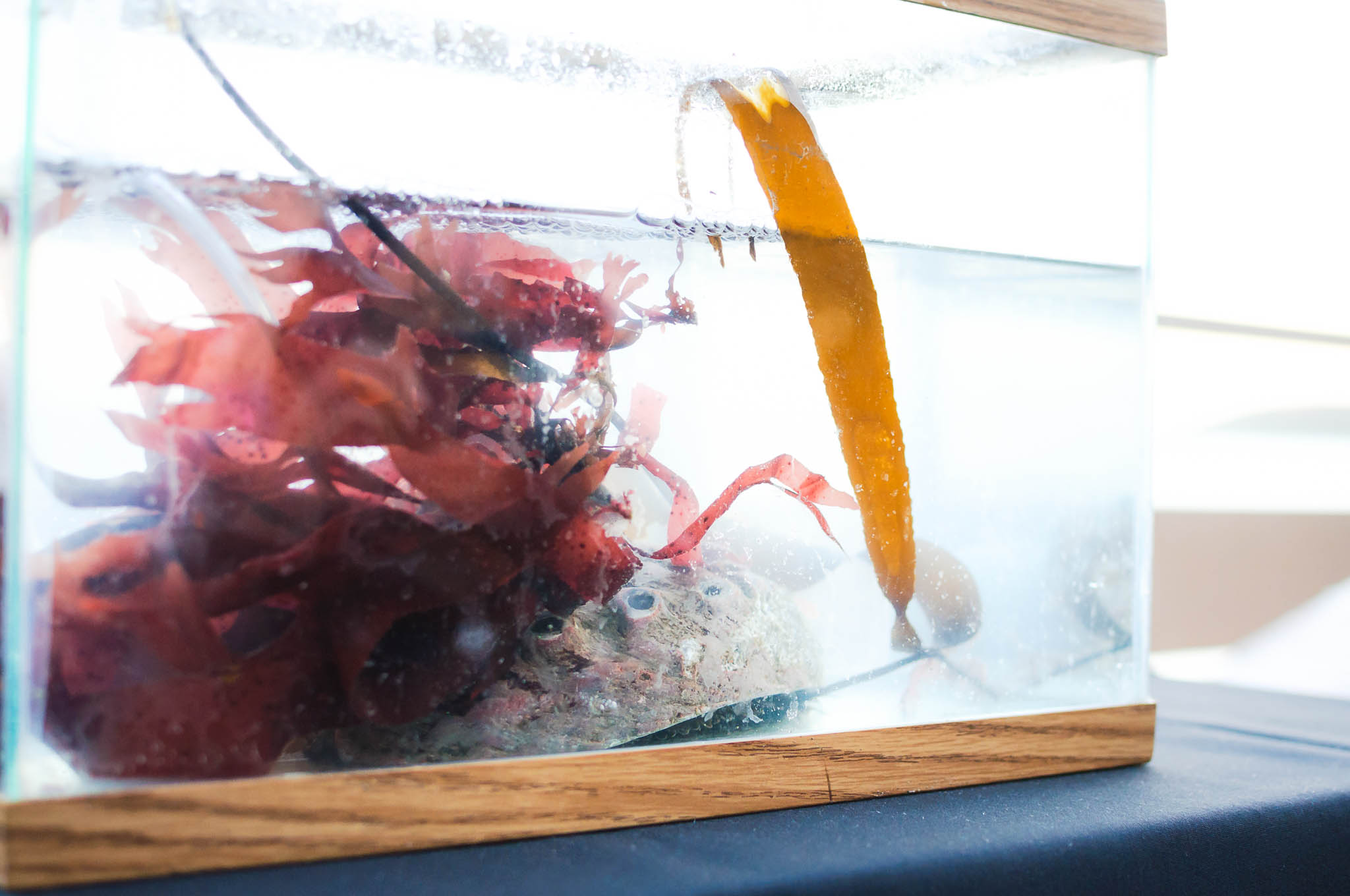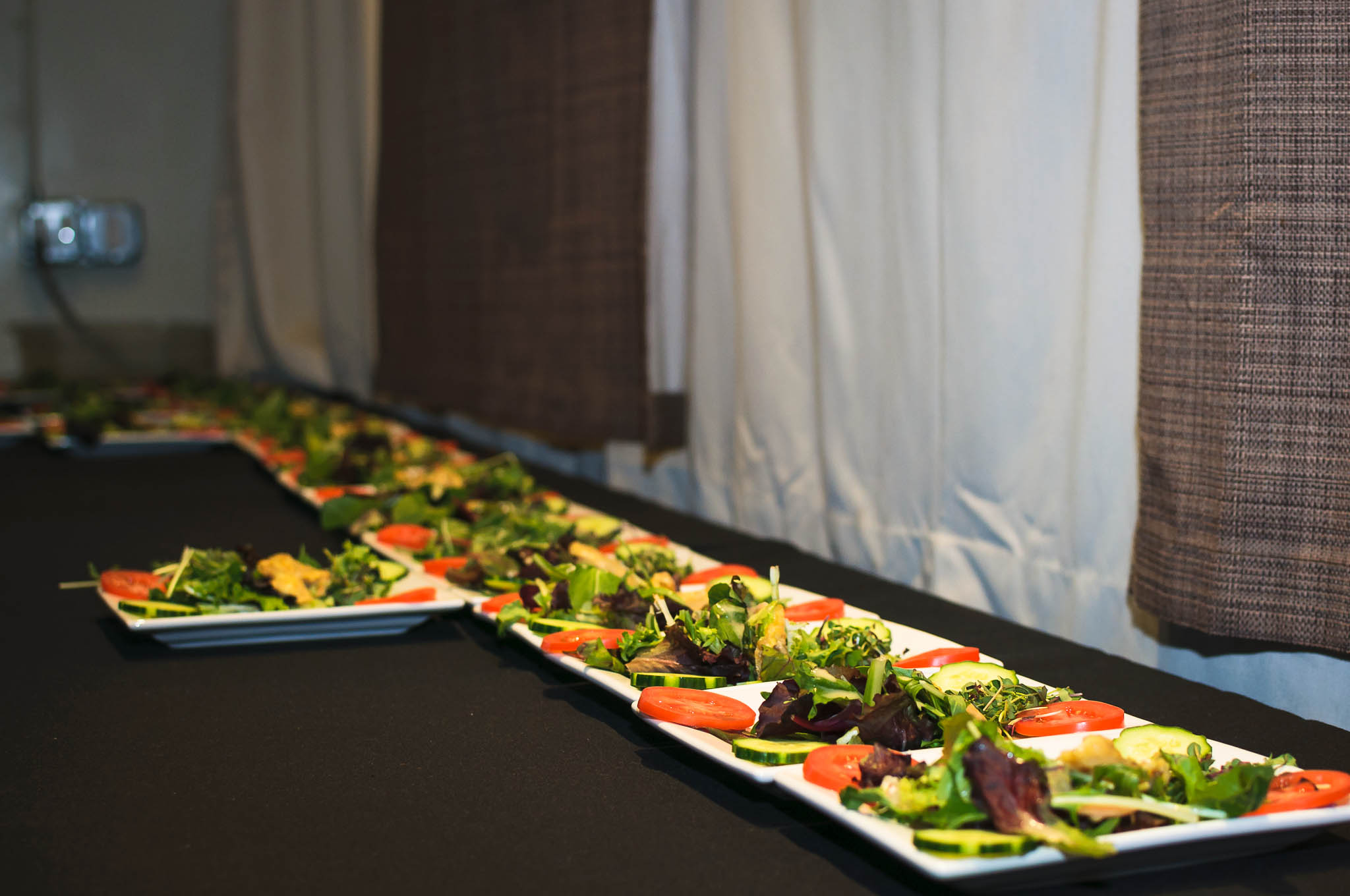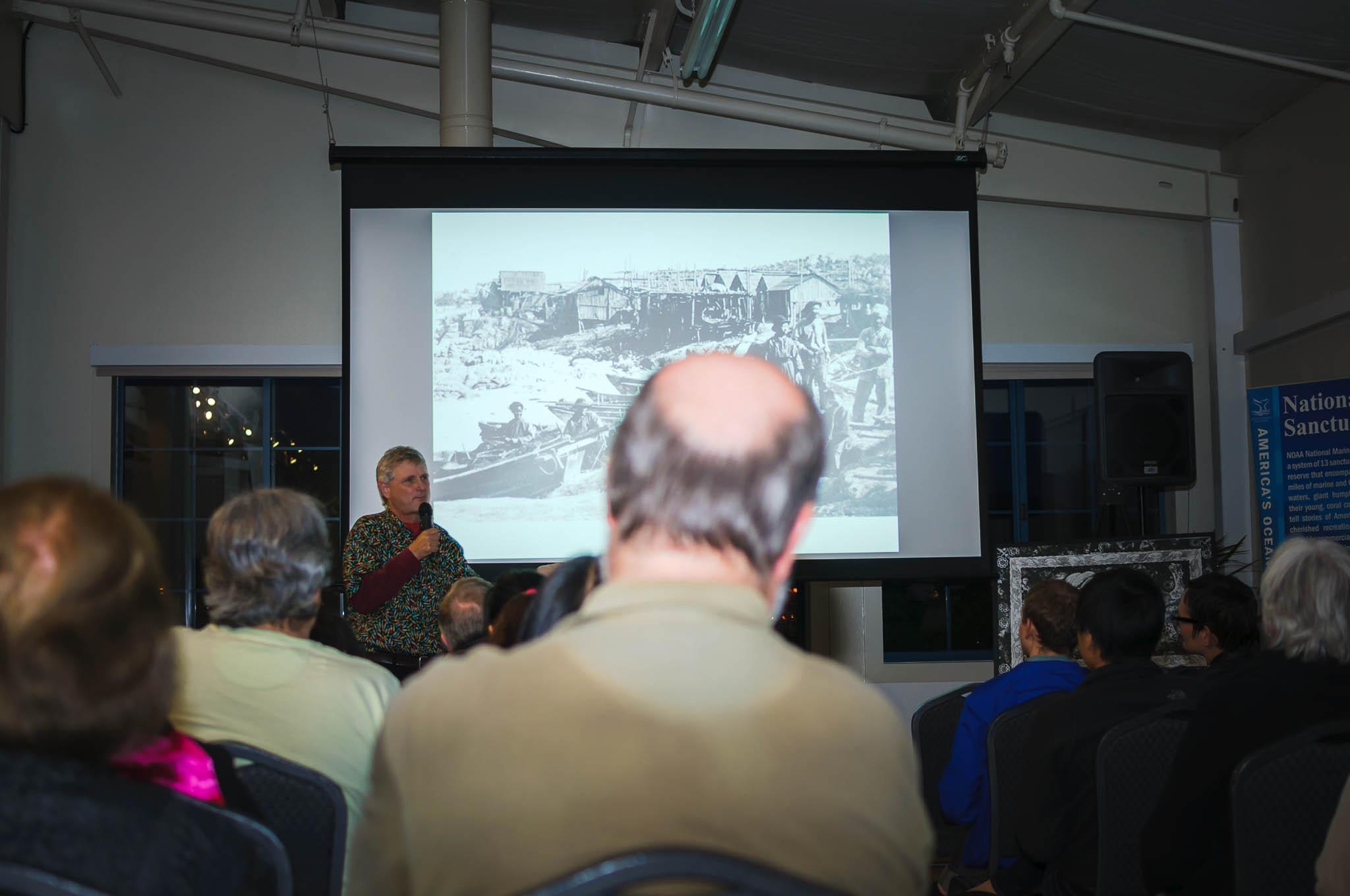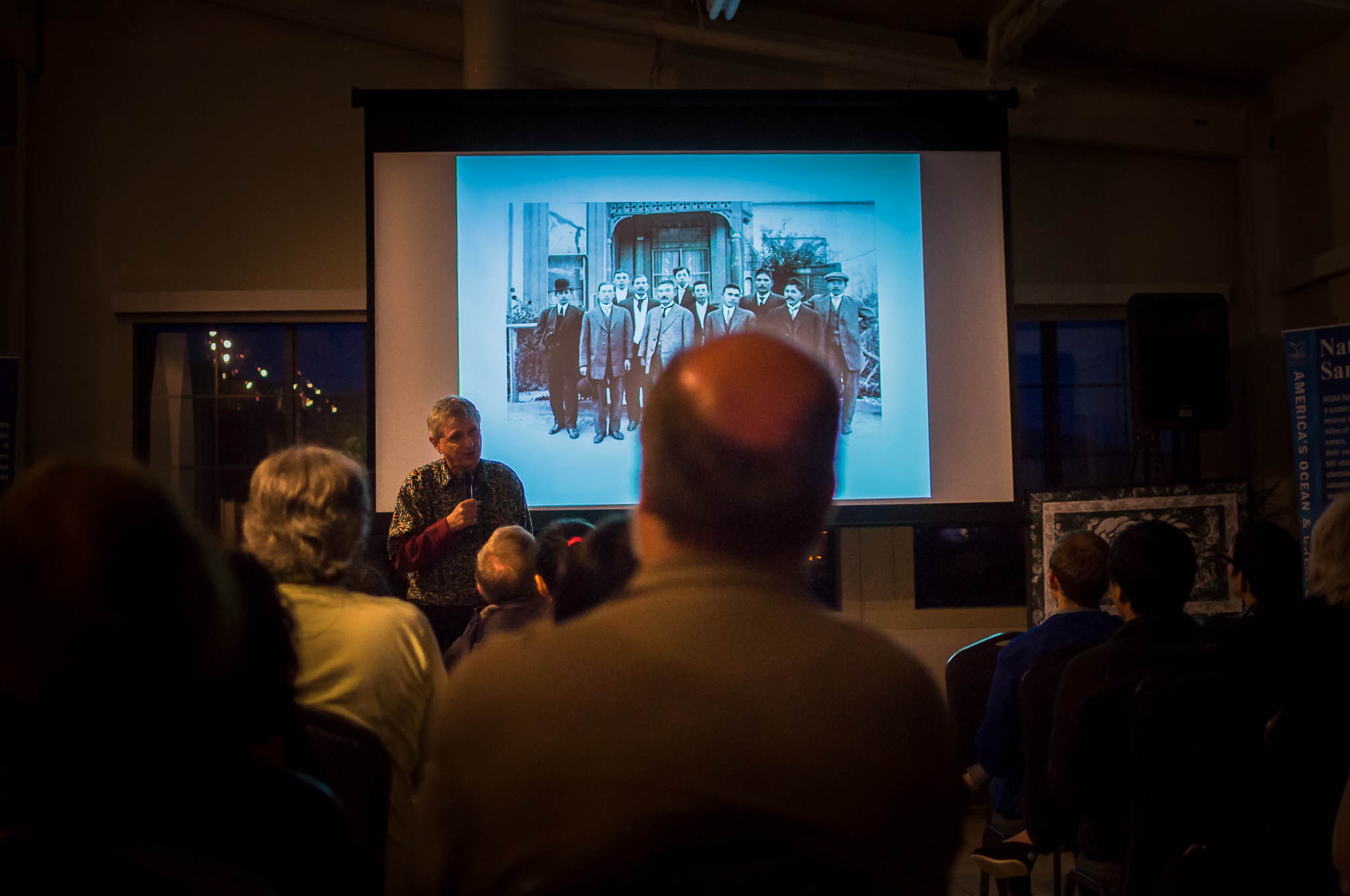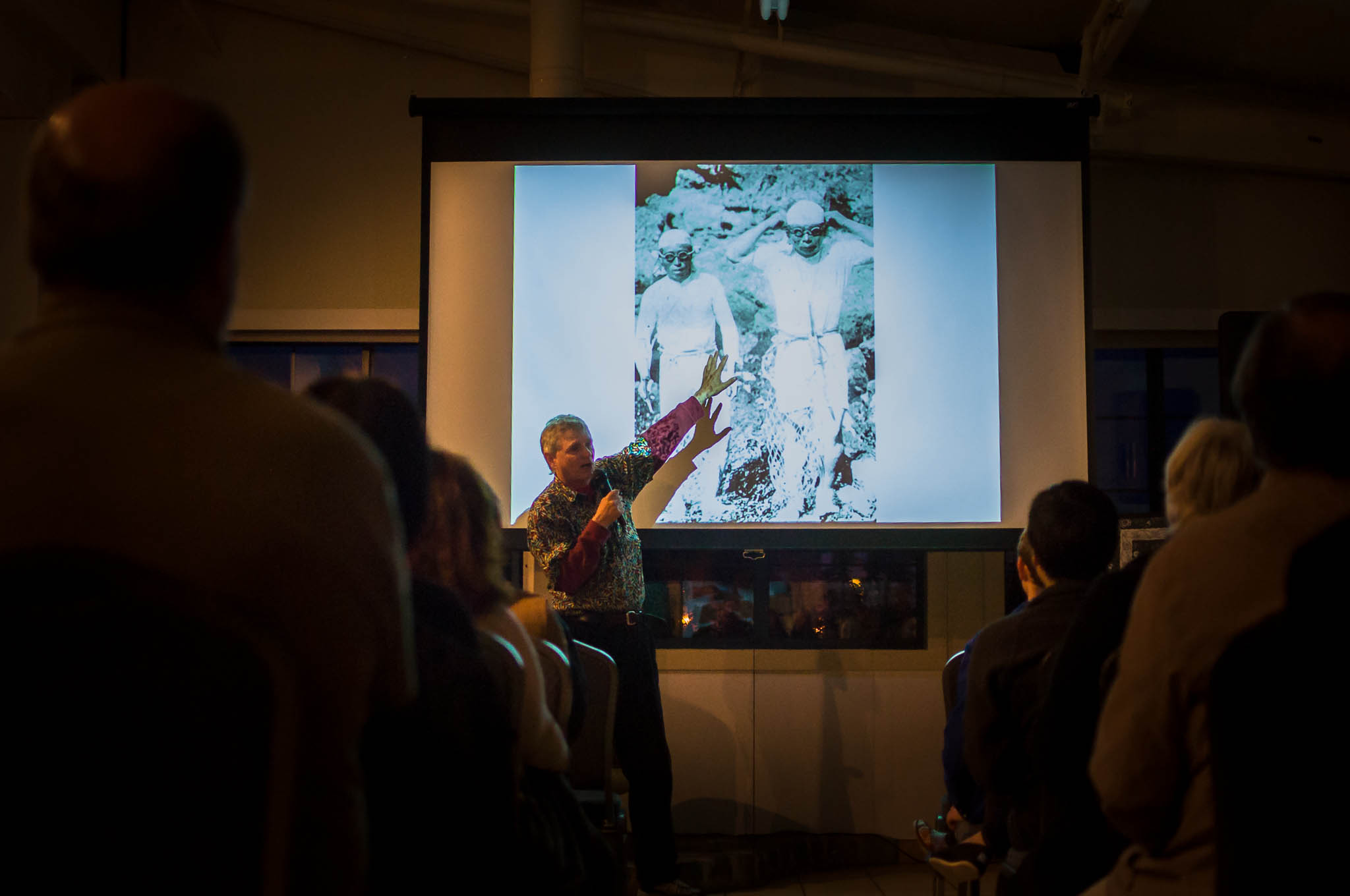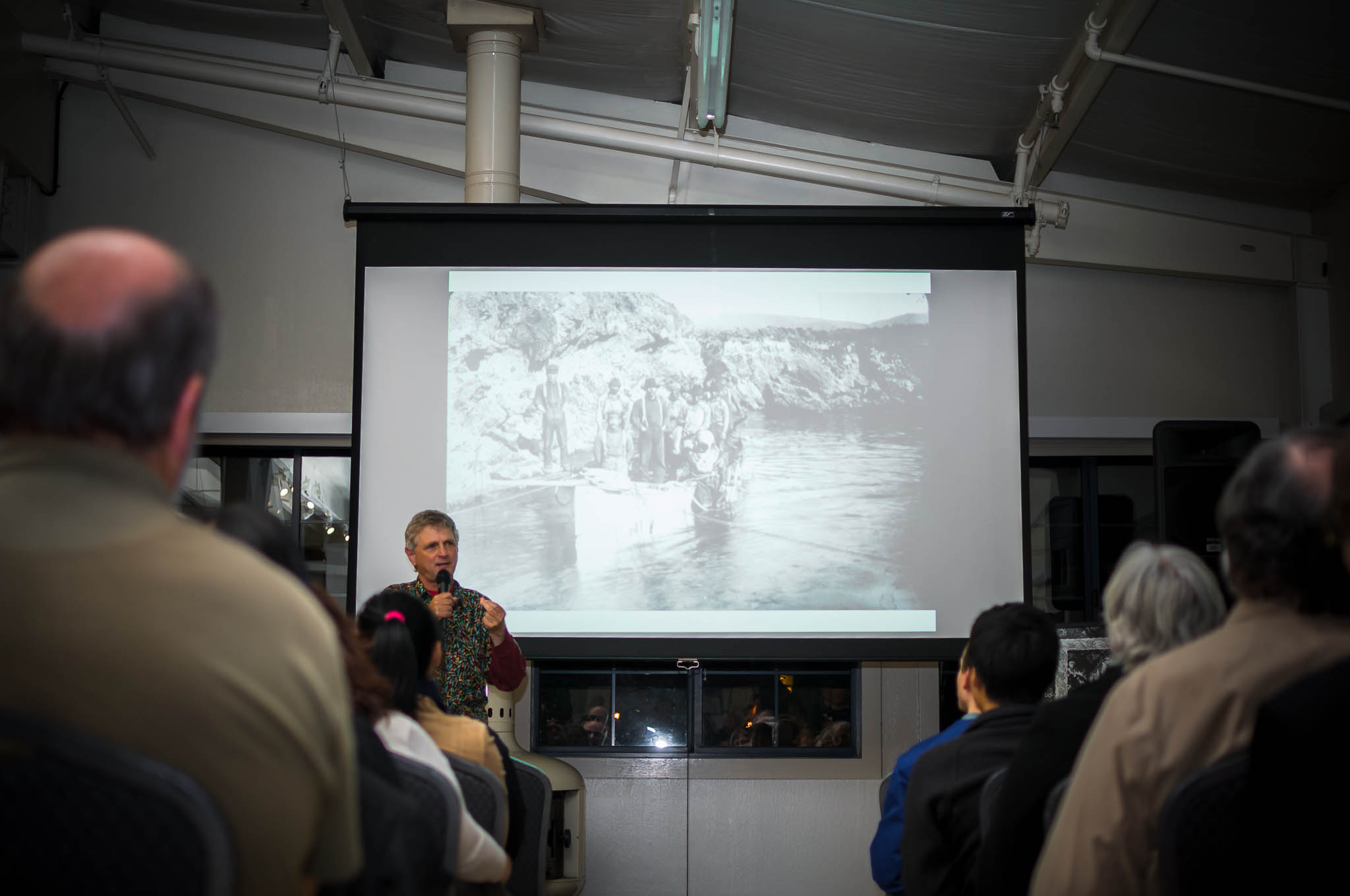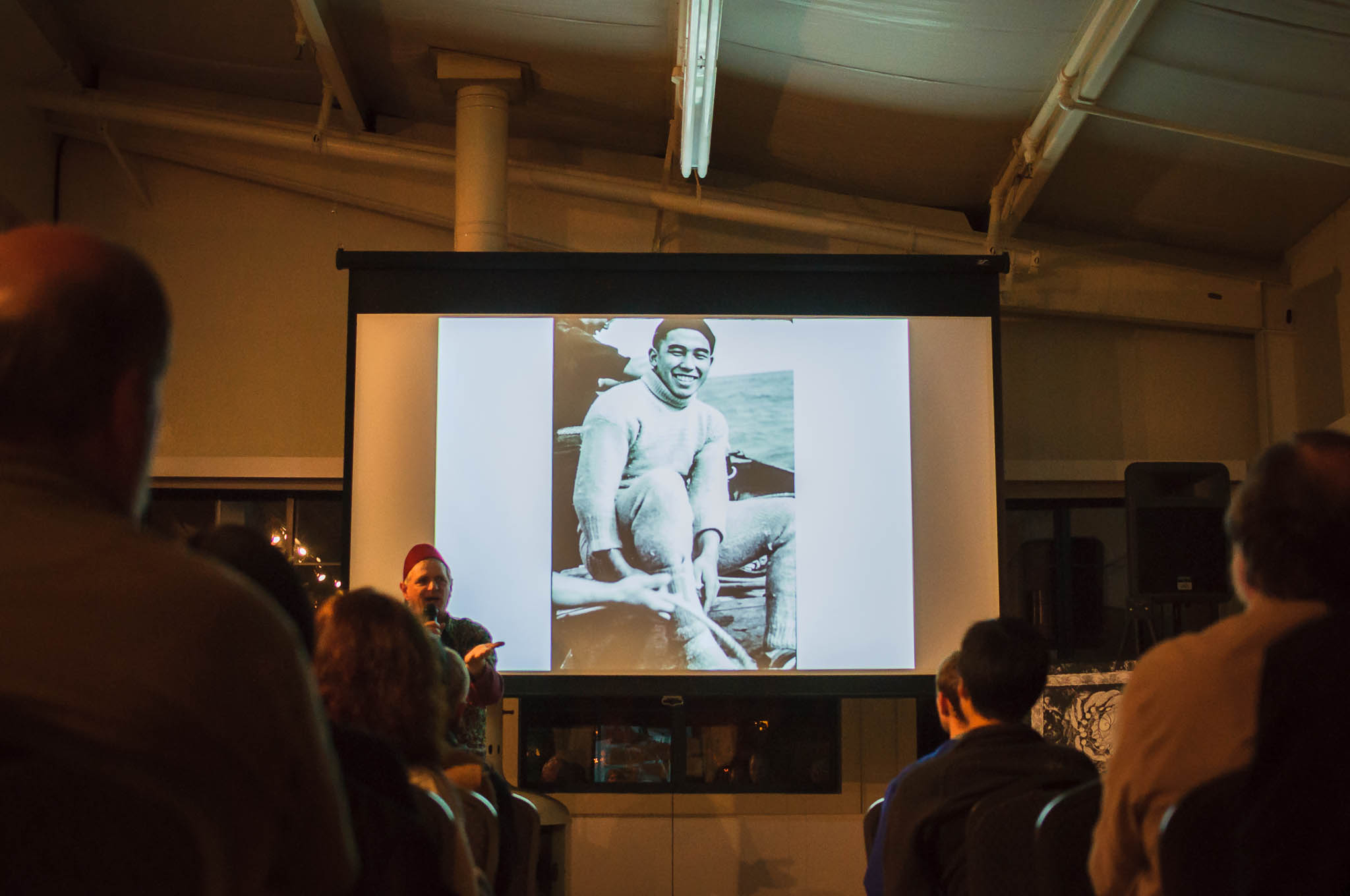Today I will be reposting something that used to appear on this site, but was lost when I moved from my old host.
This night focused on the red abalone, but differed from the usual routine. Rather than talk about the physiology and ecological context of the abalone, the speaker Tim Thomas talked about the history of abalone fishing in Monterey Bay.
Speaker: Tim Thomas (Monterey Waterfront & Cannery Row Tours)
When: March 23rd, 2013
Where: Mavericks Event Center, Half Moon Bay CA
About the event series
These events are usually held a few time a year at the Randall Museum in San Francisco, where they are co-hosted by Gulf of the Farallones National Marine Sanctuary & Farallones Marine Sanctuary Association. Each soiree celebrates a different marine species of California. Past soirees have focused on the sea turtle, Humboldt squid, sperm whale, and shark. There''s a guest speaker lecture as well as hors d''oeuvre and drinks. It''s a fun night to make new acquaintances, learn about local history, and discuss the local ecosystem.
Pre-Lecture Activities
Maverick''s Event Center is tucked away inside Pillar Point Harbor in El Granada. Nice sunset (but cold!)
The site of the old radar dish looked neat at night.
About 100 people attended. The patio was really popular; there were a number of heat lamps and even a fire pit to take the chill off.
The organizers always do a good job with appetizers and drinks, but this night was something special. Mixed greens with sautéed abalone and a honey mustard vinaigrette. I have had abalone as sashimi before, but never cooked. It was quite good, with a firm and slightly springy consistency. Not as soft as scallop, but not as tough as squid. Let me tell you that it was MUCH MUCH tastier this way, and you will understand why they tenderize it. When eaten raw it is hard as a rock.
The food was good, but I didn't expect to be eating the guest of honor!
There are also artists who craft wood block stamps for each event. You ink and press them, and get to take home the result. These guys joined our elephant seal, sea turtle, and humboldt squid woodblock prints.
The Lecture
After eating, mingling, and getting our woodblock printing on, Tim Thomas took the floor to talk about the history of abalone fishing in Monterey Bay. Tim was a historian at the Monterey Maritime Museum for many years, and gives walking tours of Cannery Row. He's an expert on Monterey''s fishing communities and is co-author of "Monterey's Waterfront". Up until the end of the 19th century, Monterey Bay (which includes Carmel) included vast beds of these mollusks. The reason for the abalone''s abundance was probably due to the earlier decimation of the otter population, their natural predator. The caucasian community had never considered eating the abalone, leaving the market open to Chinese immigrants, who came to Monterey in the 1850s and began harvesting abalone as well as the local fish. Later in the century, caucasian businessmen would get in on the action, bringing in trained divers from Japan''s southern Chiba prefecture (Minami Bōsō, the peninsula southwest of Tokyo).
I thought that part was particularly interesting, because I used to live there as part of an English teaching program. Furthermore, the divers were actually from Tateyama, where I used to live! Some of them also came from Chikura and Shirohama. They were a little shocked when they came with their white cotton diving suits, for the water was far colder than they were used to.
Here are some of the men that helped supply the early abalone industry:
When I lived in Tateyama I was told that they were famous for their shellfish divers. There is even a tradition of female divers that goes pretty far back. I never knew about the Monterey connection, though.
Tim told me that the Tateyama Maritime Museum now covers this part of their history. He also traveled out there to interview the families of the divers. Those men had sent money and trinkets back home, and Monterey became fairly well known. On the left is a fisherman''s coat. You can see it says something about a USA company. On the right is a house shrine where abalone, as the source of their livelihood is prominently featured. There were also some Monterey memorabilia that you can''t see.
"Pop" Ernest Doetler, The Abalone King
So how did people consume abalone back then? Since the bulk of it was originally destined for export, it would be salted and dried. The problem was that this could lead to spoilage, so they turned to canning. Domestic consumption didn't really take off until Ernest "Pop" Doetler came along. He came to California in 1906 and opened small restaurant called Cafe Ernest. Remember how I mentioned how tough raw abalone is? Pop experimented and eventually developed a recipe that tenderized the abalone by pounding. He then served it in stew and other dishes and was responsible for its culinary success. No longer would the noble abalone be looked upon as a rubbery rocksucker of last resort.
In 1919 he moved from Alvarado street to Monterey''s Fisherman's Wharf. Eventually he ended up with a joint in San Francisco as well. Here''s a the drawing from his menu. You can see his signature fez, which he reportedly obtained from the World's Fair.
There's even an abalone song! George Sterling and friends composed this around 1907.
Here's a verse:
“Oh! Some folks boast of quail and toast,
Because they think it’’s tony;
But I’’m content to owe my rent
And live on abalone.
By Carmel Bay, the people say
We feed the lazzaroni
On Boston Beans and fresh sardines
And toothsome abalone.”
Just Too Damn Tasty
Unfortunately Pop Ernest and others did their jobs too well. Abalone became so popular that it was overfished since there was no fishery management back then. The Monterey abalone industry had to shut down, and with it all large scale abalone consumption. But maybe it's a good thing for the abalone, for red abalone still survive in Monterey Bay and elsewhere, though they are not as plentiful as they once were.
That About Wraps it Up
Hope you enjoyed reading this post. There's a few more photos remaining. Don't forget to visit the comments and let me know:
- Have you ever eaten abalone? How was it prepared, and did you like it?
- Is your city or region famous for dishes featuring a particular animal? What is it? Is that animal still around?
